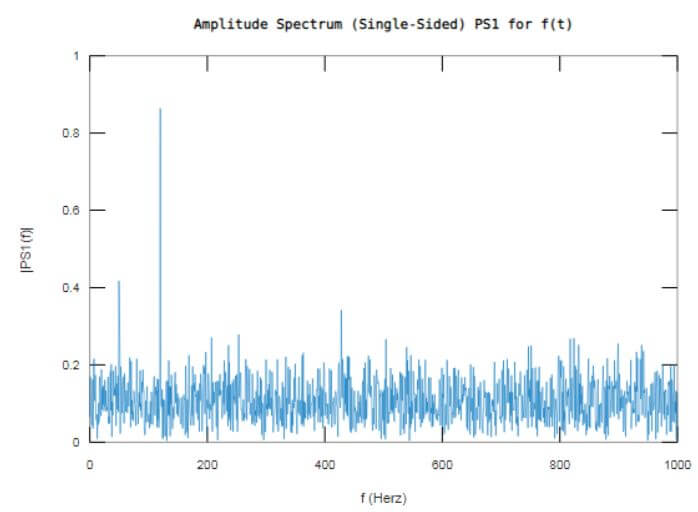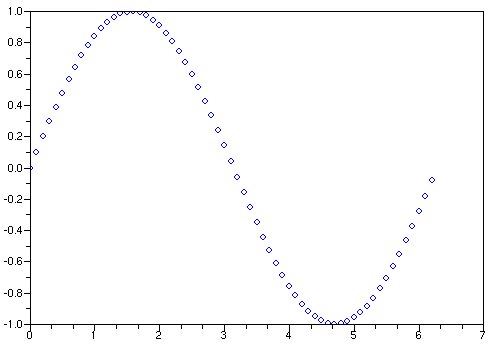

- #Scilab fft example how to
- #Scilab fft example install
- #Scilab fft example generator
- #Scilab fft example manual
GPU Code Generation Generate CUDA® code for NVIDIA® GPUs using GPU Coder™. For more information, see CMSIS Conditionsįor MATLAB Functions to Support ARM Cortex-M

#Scilab fft example install
To generate this optimized code, you must install the Embedded Coder Support Package for ARMĬortex-M Processors (Embedded Coder). For more information, see Ne10 Conditions for MATLAB Functions to Support ARM Cortex-A Must install the Embedded Coder ® Support Package for ARMĬortex-A Processors (Embedded Coder). Take the 2D Fourier transform of each zero extended image, divide elementwise, then take the inverse 2D. Zero extend both images in case of m x m and n x n images, both should be zero padded to m+n-1 x m+n-1. Using the Code Replacement Library (CRL), you can generate optimized This post, albeit using Matlab, provides an example of deconvolution using 2D Fourier transforms. Simulation software uses the library that MATLAB uses for FFT algorithms.

Information about an FFT library callback class, see 3Interface (MATLAB Coder).įor simulation of a MATLAB Function block, the To generate calls to a specific installedįFTW library, provide an FFT library callback class.
#Scilab fft example generator
For standalone C/C++ code, byĭefault, the code generator produces code for FFT algorithms instead of S=sin(2*%pi*50*t)+ 0.3*sin(2*%pi*70*t+%pi/4)+ 0.For limitations related to variable-size data, see Variable-Sizing Restrictions for Code Generation of Toolbox Functions (MATLAB Coder).Ĭoder™ uses the library that MATLAB uses for FFT algorithms. build a noides signal sampled at 1000hz containing to pure frequencies This also displays frequency in Hz, not radians.

It demonstrates a normalized plot showing only the positive X-axis, and if you play with the input signal amplitudes, it will be reflected 1 for 1 on the frequency plot.
#Scilab fft example manual
Here is a bit that I modified from one of the help manual examples. This could be normalized by dividing by N/2. So on to your question, "what does the y axis mean?" It's 50, and we would expect it to be "1". The output of the FFT plot represents the frequency(s) present in the signal analyzed on the X axis, and the magnitude (amplitude) of the additive component at that frequency. Fourier has demonstrated that any mathematical function can be represented as a sum of sines of different frequencies and time relationship (phase). FFT (or fast fourier transform) merely refers to a computational algorithm to compute the DFT (Discrete Fourier Transform) of a digitally represented signal. This relates to the whole chunk of theory behind the Fourier transform. Short answer: The Y axis is signal amplitude * N/2. Now, click on the image and look where the peaks are. Observing that w = 0.5 is the frequency of the sampled signal, the true frequency (of the analog source signal) is given by w_source = w/T = 0.5/0.1 = 5 rad/s. Plot(f*2*%pi*T, X) // plot the signal indexed by radians Plot(n*T, x) // plot the signal indexed by seconds W = 0.5 // frequency of the sampled signal (in radians) The function fft(.) returns the signal in the interval, so you can use the function fftshift(.), over the function fft(.) like this: X = fftshift(fft(x)), that it returns the Fourier Transform in the intervals:Ībout the frequencies, if your signal was sampled with a rate T (T samples by second), the indexes are given multiplying the interval by: 2*%pi*T. If your signal has N values, then the Fourier Transform has N distinct values.
#Scilab fft example how to
This post is about the FFT function, and anyone wants to know how to specify the frequencies for plot the values. I'd like to know my readers, but the "no name" readers deserve respect, as everybody.


 0 kommentar(er)
0 kommentar(er)
